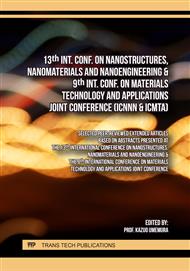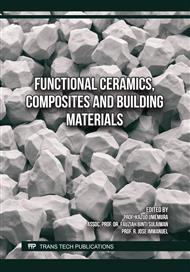p.11
p.19
p.29
p.41
p.49
p.55
p.61
p.71
p.77
The Mechanical Properties of Vanillin-Incorporated Surgical Obturator Resin
Abstract:
PMMA resin has been commonly used for fabricating surgical obturators. However, the surface roughness and porosity of the resin can cause microbial aggregation and biofilm formation, leading to potential complications for the patients. Recent progress in antimicrobial strategies for PMMA resin has been reported. It was shown that incorporating vanillin into PMMA resin inhibited biofilm formation by bacteria and yeasts. However, the effect on other properties of the resin has not been studied. The aim of this study was to evaluate the mechanical properties of PMMA resin with 0.1% and 0.5% vanillin incorporation, including flexural strength, flexural modulus, and surface hardness, compared to a control group. All tests were performed according to ISO 20795-2:2013. For flexural strength and modulus, specimens are tested using a three-point bending machine. A Vickers hardness apparatus was used for the surface hardness test. Data on both surface hardness and flexural modulus were statistically analyzed by one-way ANOVA and Turkey’s multiple comparison test. Those of flexural strength were statistically analyzed by the Welch and Dunnett T3 Test with a significance level of 0.05. Results indicated that increasing the amount of vanillin incorporation decreased flexural strength, modulus, and surface hardness. Nevertheless, flexural strength and modulus were still within ISO standards. In conclusion, the incorporation of vanillin into PMMA resin could affect its mechanical properties. However, the application of this resin in a clinical setting could possibly be done due to its standardized flexural strength and modulus.
Info:
Periodical:
Pages:
49-54
Citation:
Online since:
March 2025
Keywords:
Price:
Сopyright:
© 2025 Trans Tech Publications Ltd. All Rights Reserved
Share:
Citation:



